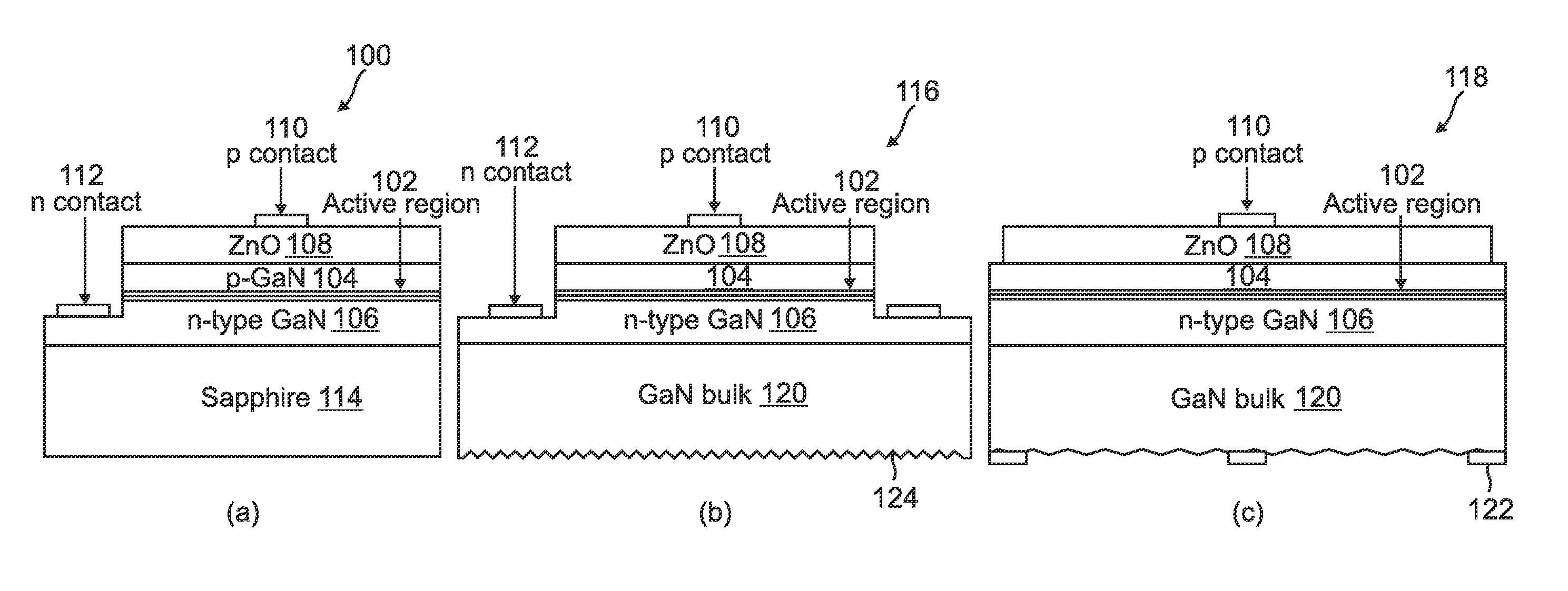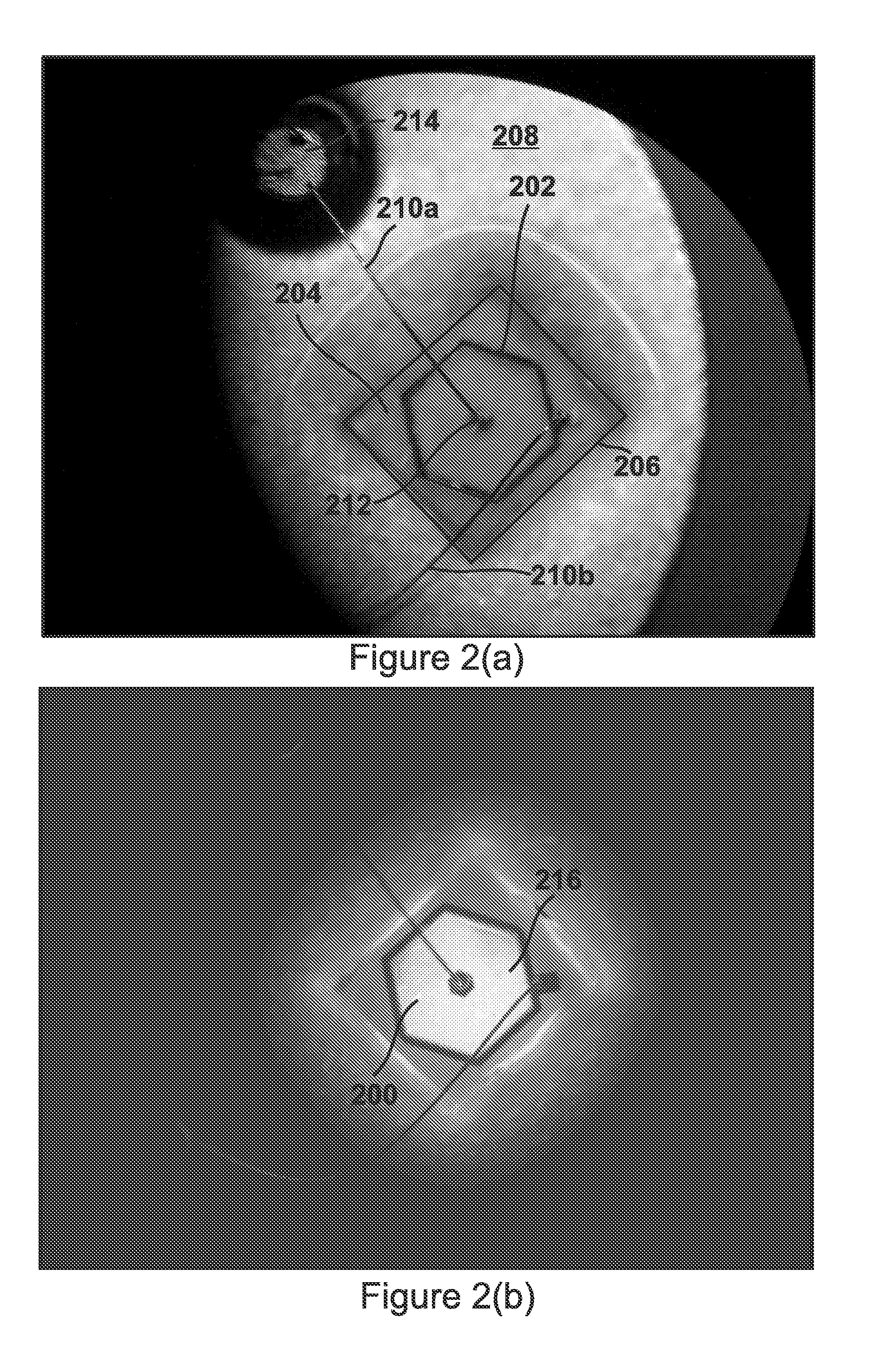Light emitting diodes with zinc oxide current spreading and light extraction layers deposited from low temperature aqueous solution
a technology of zinc oxide and light extraction layer, which is applied in the direction of semiconductor devices, crystal growth process, chemistry apparatus and processes, etc., can solve the problems of reducing the internal quantum efficiency of the device, affecting the efficiency of the light extraction device, and large portion of the contact, etc., to achieve low cost, high electrical conductivity, and ease/economics of low temperature water processing
- Summary
- Abstract
- Description
- Claims
- Application Information
AI Technical Summary
Benefits of technology
Problems solved by technology
Method used
Image
Examples
Embodiment Construction
[0055]In the following description of the preferred embodiment, reference is made to the accompanying drawings which form a part hereof, and in which is shown by way of illustration a specific embodiment in which the invention may be practiced. It is to be understood that other embodiments may be utilized and structural changes may be made without departing from the scope of the present invention.
[0056]Overview
[0057]The purpose of this invention is to improve the performance of III-N LEDs though the addition of ZnO layers to the LEDs' surfaces. These layers can improve the light extraction, heat dissipation, and current distribution (current spreading) of the device. Structuring, patterning, or roughening of the ZnO layers, either during or subsequent to synthesis, is anticipated to further improve the light extraction and heat dissipation enhancements possible using these films. Due to growing energy concerns, efficient LED lighting technology is of current and expanding importance...
PUM
| Property | Measurement | Unit |
|---|---|---|
| temperature | aaaaa | aaaaa |
| exciton binding energy | aaaaa | aaaaa |
| band gap | aaaaa | aaaaa |
Abstract
Description
Claims
Application Information
 Login to View More
Login to View More - R&D
- Intellectual Property
- Life Sciences
- Materials
- Tech Scout
- Unparalleled Data Quality
- Higher Quality Content
- 60% Fewer Hallucinations
Browse by: Latest US Patents, China's latest patents, Technical Efficacy Thesaurus, Application Domain, Technology Topic, Popular Technical Reports.
© 2025 PatSnap. All rights reserved.Legal|Privacy policy|Modern Slavery Act Transparency Statement|Sitemap|About US| Contact US: help@patsnap.com



